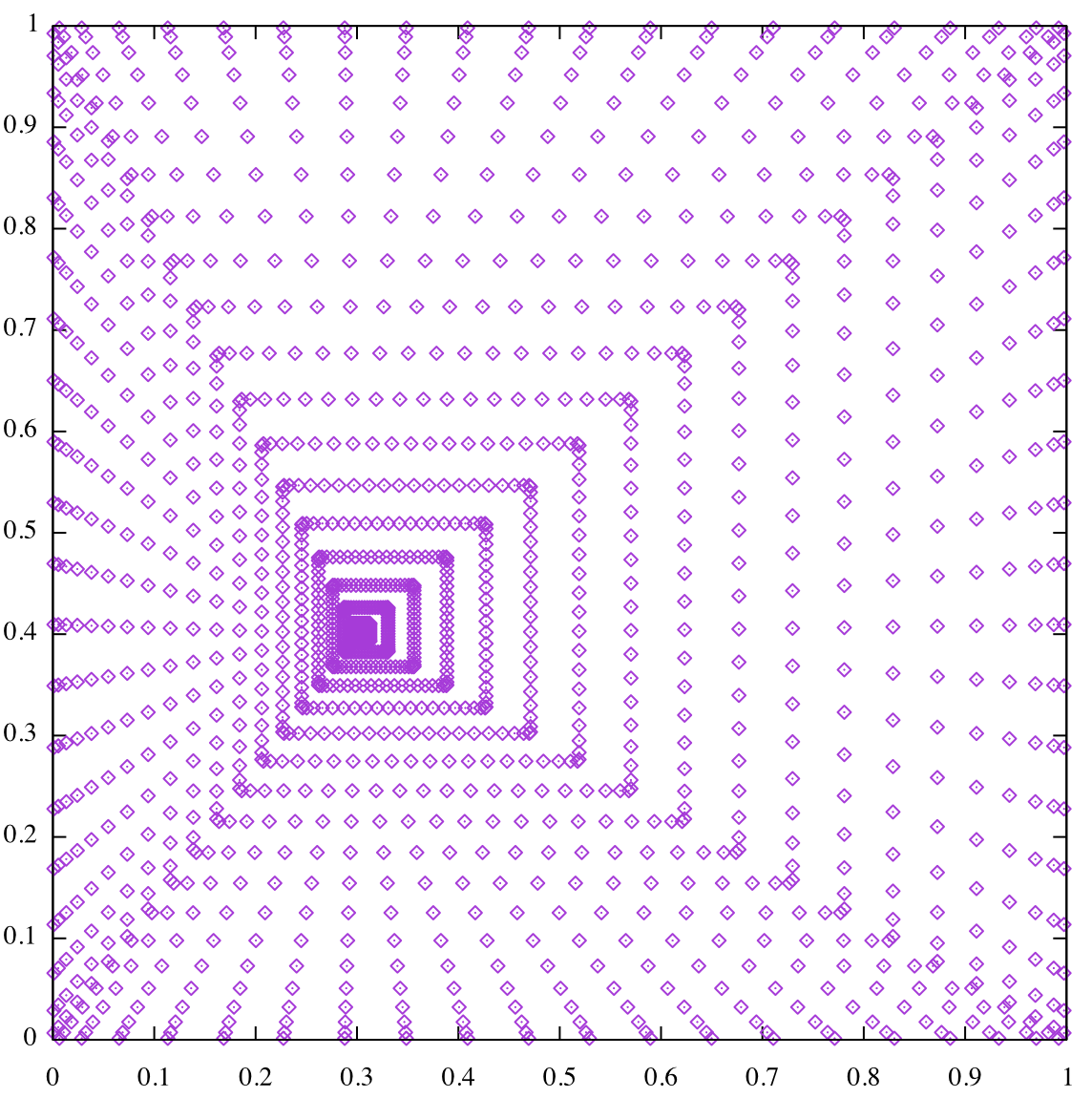 |
Reference documentation for deal.II version 9.0.0
|
 |
Reference documentation for deal.II version 9.0.0
|
#include <deal.II/base/quadrature_lib.h>
Public Member Functions | |
| QSplit (const QSimplex< dim > &base, const Point< dim > &split_point) | |
 Public Member Functions inherited from Quadrature< dim > Public Member Functions inherited from Quadrature< dim > | |
| Quadrature (const unsigned int n_quadrature_points=0) | |
| Quadrature (const SubQuadrature &, const Quadrature< 1 > &) | |
| Quadrature (const Quadrature< dim !=1 ? 1 :0 > &quadrature_1d) | |
| Quadrature (const Quadrature< dim > &q) | |
| Quadrature (Quadrature< dim > &&) noexcept=default | |
| Quadrature (const std::vector< Point< dim > > &points, const std::vector< double > &weights) | |
| Quadrature (const std::vector< Point< dim > > &points) | |
| Quadrature (const Point< dim > &point) | |
| virtual | ~Quadrature ()=default |
| Quadrature & | operator= (const Quadrature< dim > &) |
| Quadrature & | operator= (Quadrature< dim > &&)=default |
| bool | operator== (const Quadrature< dim > &p) const |
| void | initialize (const std::vector< Point< dim > > &points, const std::vector< double > &weights) |
| unsigned int | size () const |
| const Point< dim > & | point (const unsigned int i) const |
| const std::vector< Point< dim > > & | get_points () const |
| double | weight (const unsigned int i) const |
| const std::vector< double > & | get_weights () const |
| std::size_t | memory_consumption () const |
| template<class Archive > | |
| void | serialize (Archive &ar, const unsigned int version) |
| bool | is_tensor_product () const |
| std::conditional< dim==1, std::array< Quadrature< 1 >, dim >, const std::array< Quadrature< 1 >, dim > & >::type | get_tensor_basis () const |
 Public Member Functions inherited from Subscriptor Public Member Functions inherited from Subscriptor | |
| Subscriptor () | |
| Subscriptor (const Subscriptor &) | |
| Subscriptor (Subscriptor &&) noexcept | |
| virtual | ~Subscriptor () |
| Subscriptor & | operator= (const Subscriptor &) |
| Subscriptor & | operator= (Subscriptor &&) noexcept |
| void | subscribe (const char *identifier=nullptr) const |
| void | unsubscribe (const char *identifier=nullptr) const |
| unsigned int | n_subscriptions () const |
| void | list_subscribers () const |
| template<class Archive > | |
| void | serialize (Archive &ar, const unsigned int version) |
Additional Inherited Members | |
 Public Types inherited from Quadrature< dim > Public Types inherited from Quadrature< dim > | |
| typedef Quadrature< dim-1 > | SubQuadrature |
 Static Public Member Functions inherited from Subscriptor Static Public Member Functions inherited from Subscriptor | |
| static ::ExceptionBase & | ExcInUse (int arg1, std::string arg2, std::string arg3) |
| static ::ExceptionBase & | ExcNoSubscriber (std::string arg1, std::string arg2) |
 Protected Attributes inherited from Quadrature< dim > Protected Attributes inherited from Quadrature< dim > | |
| std::vector< Point< dim > > | quadrature_points |
| std::vector< double > | weights |
| bool | is_tensor_product_flag |
| std::unique_ptr< std::array< Quadrature< 1 >, dim > > | tensor_basis |
A quadrature to use when the cell should be split into subregions to integrate using one or more base quadratures.
Definition at line 764 of file quadrature_lib.h.
| QSplit< dim >::QSplit | ( | const QSimplex< dim > & | base, |
| const Point< dim > & | split_point | ||
| ) |
Construct a quadrature formula by splitting the reference hyper cube into the minimum number of simplices that have vertex zero coinciding with split_point, and patch together affine transformations of the base quadrature. The point split_point should be in the reference element, and an exception is thrown if this is not the case.
In two dimensions, the resulting quadrature formula will be composed of two, three, or four triangular quadrature formulas if split_point coincides with one of the vertices, if it lies on one of the edges, or if it is internal to the reference element respectively.
The same is true for the three dimensional case, with six, eight, ten, or twelve tetrahedral quadrature formulas if split_point coincides with one of the vertices, if it lies on one of the edges, on one of the faces, or if it is internal to the reference element respectively.
The resulting quadrature can be used, for example, to integrate functions with integrable singularities at the split point, provided that you select as base quadrature one that can integrate singular points on vertex zero of the reference simplex.
An example usage in dimension two is given by:
The resulting quadrature will look like the following:

| base | Base QSimplex quadrature to use |
| split_point | Where to split the hyper cube |
Definition at line 1313 of file quadrature_lib.cc.
 1.8.14
1.8.14